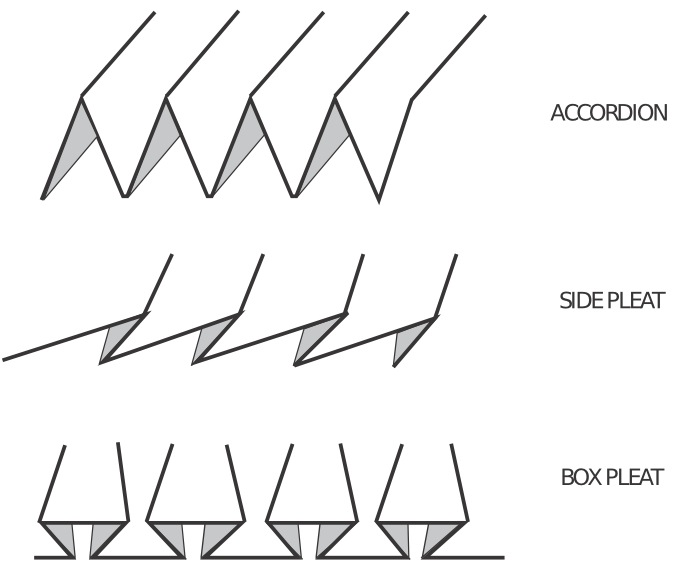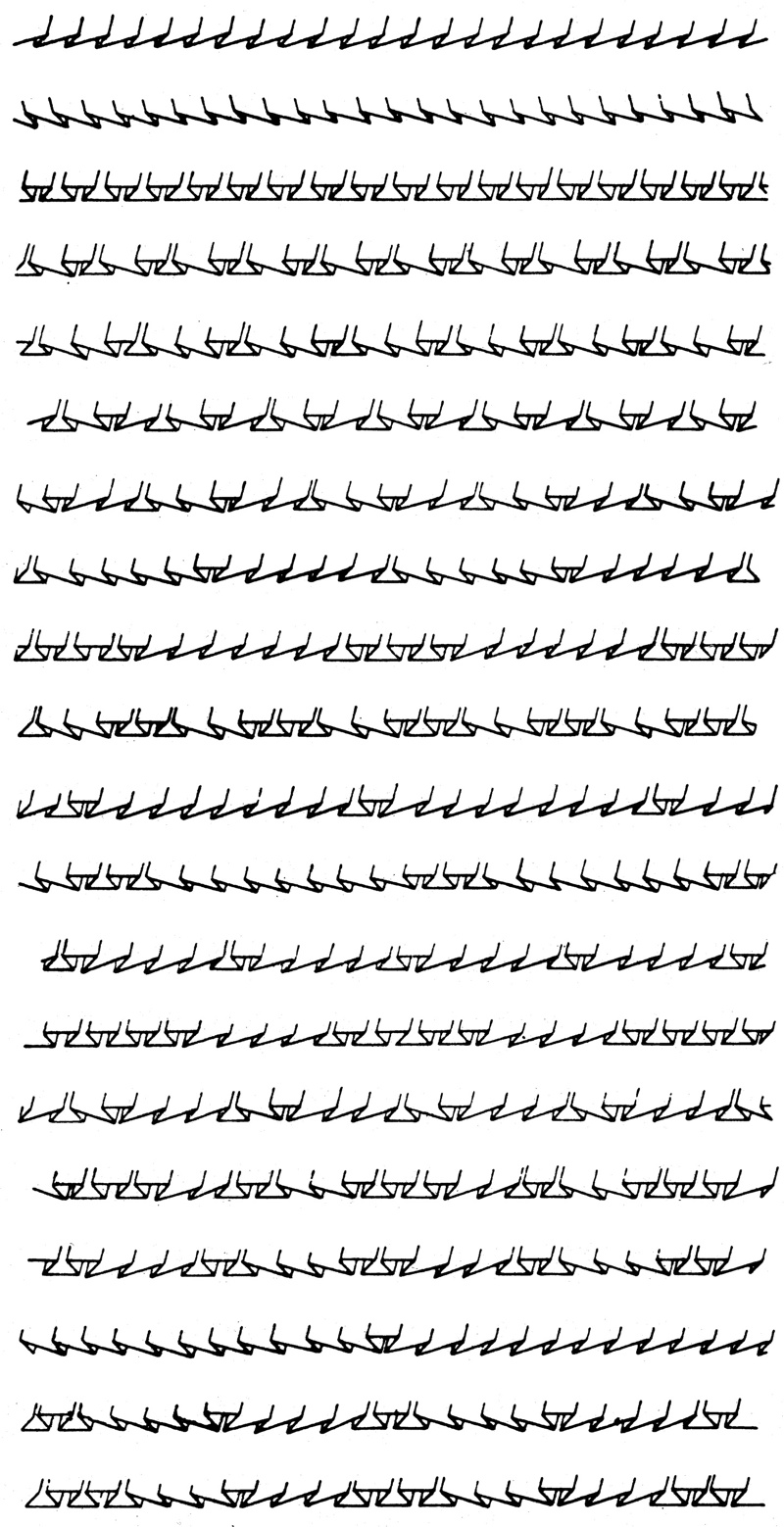This post is to help you identify the different types of pleating used by others and how they incorporate pleating into their designs. In addition, if you are a fashion designer, it will help you communicate your ideas to pleating contractors such as ourselves.
Below we have a picture the of the 3 basic pleats:

Combining The 3 Basic Pleating Styles with Panel Shapes
If we apply each of these pleating styles to the square/rectangular panel shape we get the following panels:

If we apply them to the sunburst (or half circle) panel we get the following:

When you ask for a side pleat or box pleat, etc. the default understanding is that you are referring to a straight panel shape, meaning the size of the pleat will be the same throughout the entire distance of the pleat. You must specify that you want a sunburst panel in addition to the pleat type. Typically, people call us and ask “How much is it for sunburst pleating?” Our response is always “Which one?” However, the industry standard is accordion. If you look around, you will see it is very prevalent but that’s mainly because people are unaware of their options. So, when you call us you can ask for sunburst side-pleat, sunburst box-pleat or sunburst accordion.
Combo-pleating: Combining Pleating Styles within the Same Panel
Another factor you should be aware of is that you are not limited to just the same pleat style. You can mix up the three different styles of pleating into various combinations; hence the term “combo-pleating.” For example, below you will find some variations that can be made by the combination of different pleating styles.

The images above illustrate only a fraction of the variations possible. The purpose of this post is not to catalog every possible variation, but rather to make you aware of the possibilities.
Combining Everything You Have Learned
Now imagine the variations when you combine all of the information from this post and the last three:
*The basic types of pleats
*The basic panel shapes
*Rearranging and inverting the basic pleat styles in one panel
With the following additional variables:
*Size of the pleat
*Quality of fabric
*Types of hems
The looks you can create are virtually limitless.
I want to emphasize again how important this particular post is. It ties together several basic pleating principles into workable concepts and is the foundation for future posts that will build on these principles. If I was to compare these lessons to the English language, I would say up to this point you have learned the letters and how to form words – next on the list is grammar. In order to create sentences, you must understand the laws of grammar. This also applies to using pleating or any other technique for that matter. You must understand the laws that govern it. For us, we will be learning the laws of pleating, how they interact with the characteristics of fabrics, and how these apply to the laws of garment construction.
Previous:Basic Panel Shapes For Pleating
Next:Why Ultrasonic Slitting Machine can Make the Cutting Side Smoother